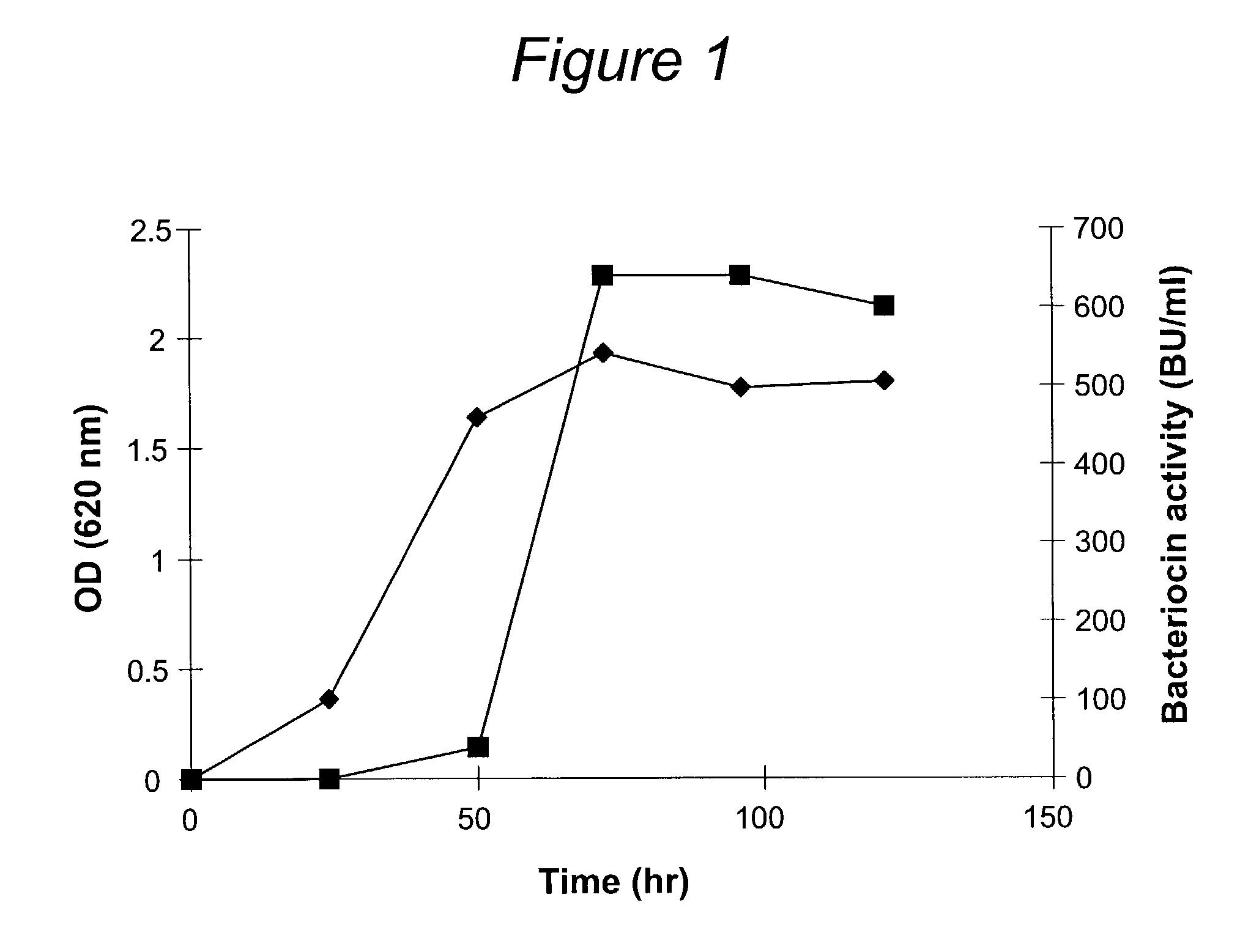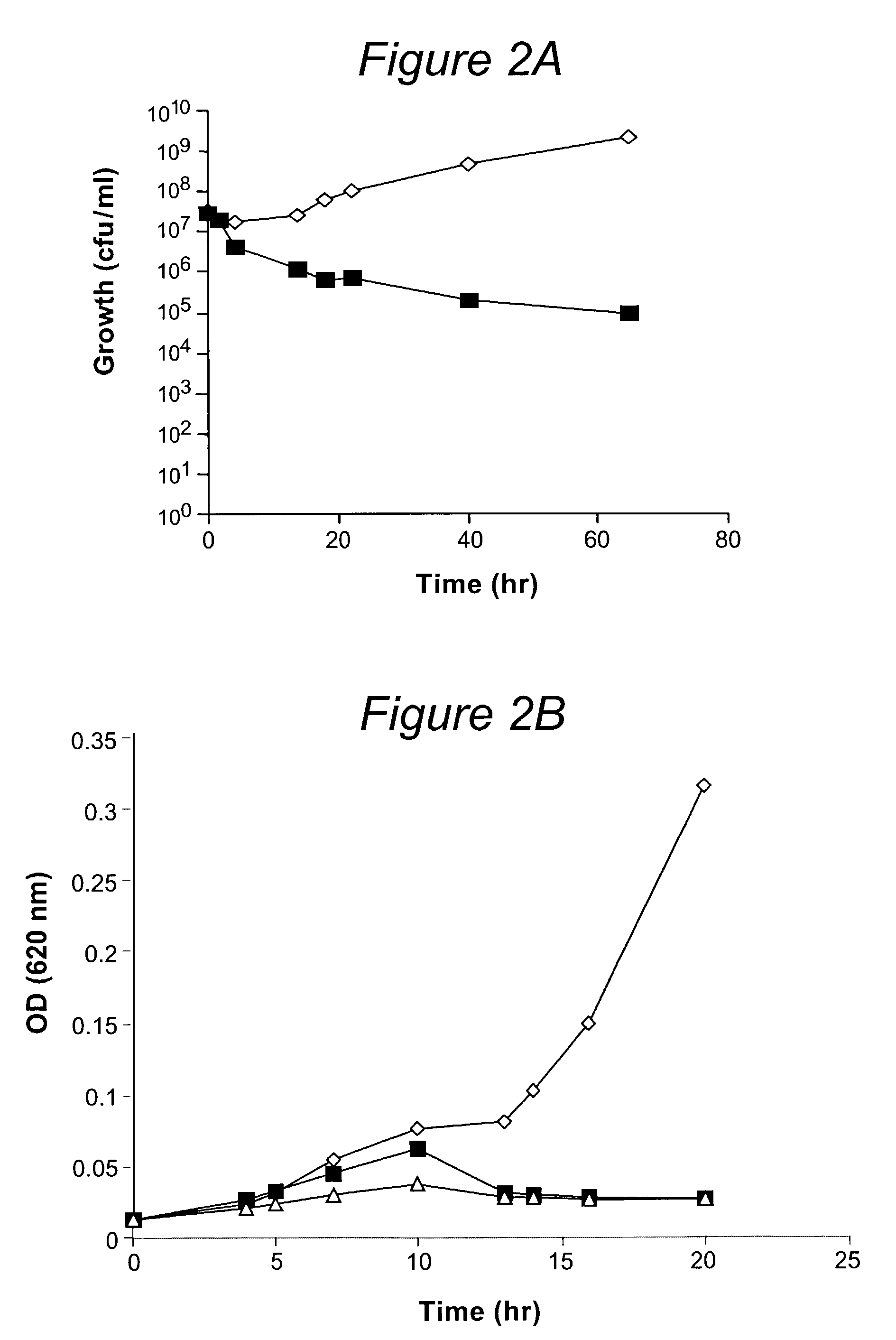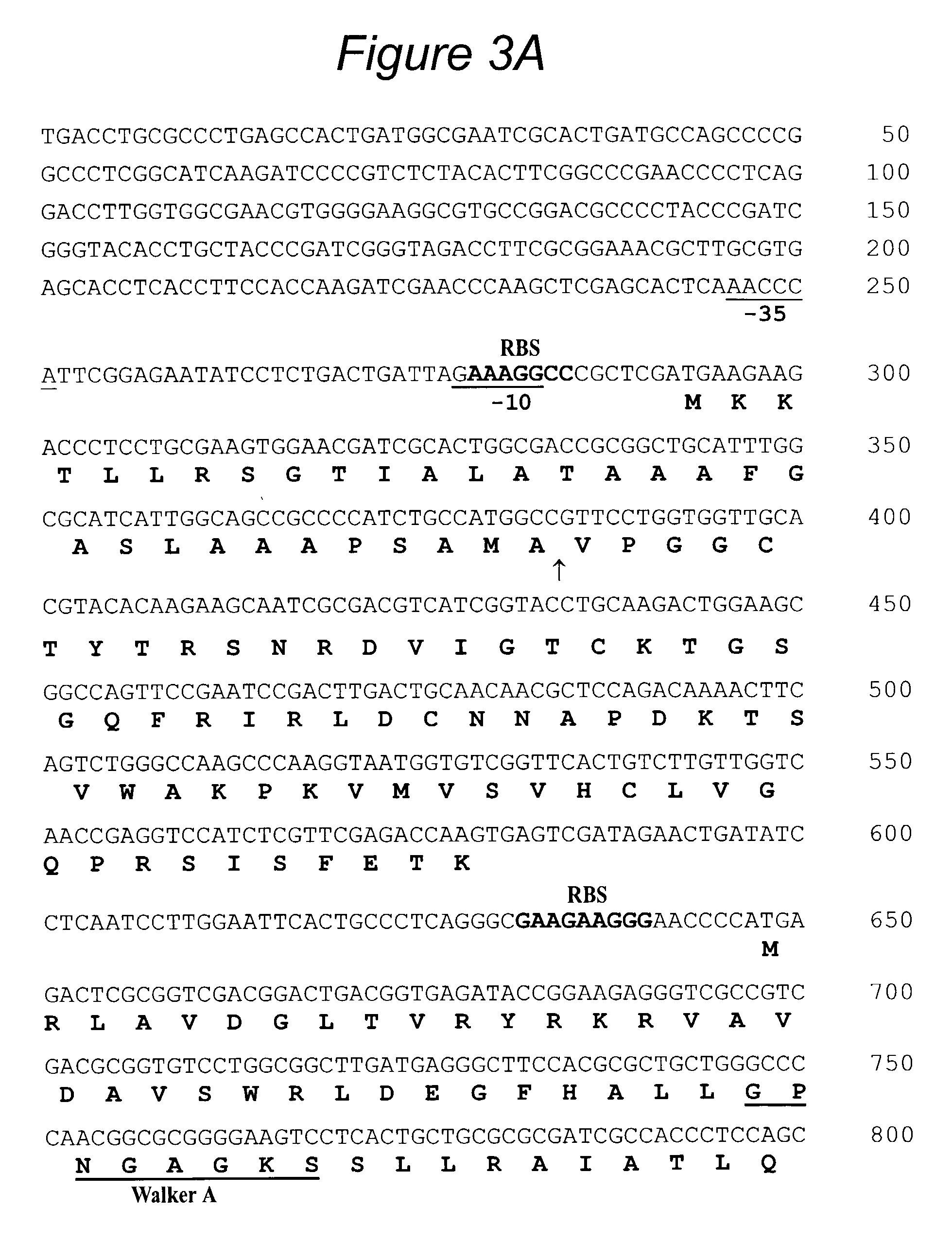Propionicin T1 polypeptide, a bacteriocin from Propionibacterium thoenii
- Summary
- Abstract
- Description
- Claims
- Application Information
AI Technical Summary
Benefits of technology
Problems solved by technology
Method used
Image
Examples
examples
[0058]A collection of propionibacteria was screened for bacteriocin production and propionicin T1 was isolated from two strains of Propionibacterium thoenii. It showed no sequence similarity to other bacteriocins. Propionicin T1 was active against all strains of Propionibacterium acidipropionici, Propionibacterium thoenii, and Propionibacterium jensenii tested, and also against Lactobacillus sake NCDO 2714. But it showed no activity against Propionibacterium freudenreichii.
[0059]Propionicin T1 was purified and its N-terminal domain was determined by amino acid sequencing. The corresponding gene pctA was sequenced, and revealed that propionicin T1 is produced as a prebacteriocin of 96 amino acids with a typical sec-leader, which is processed to give a mature bacteriocin of 65 amino acids. An open reading frame encoding a protein of 424 amino acids was found 68 nucleotides downstream the stop codon of pctA. The N-terminal domain of this putative protein shows strong similarity with t...
PUM
| Property | Measurement | Unit |
|---|---|---|
| Volume | aaaaa | aaaaa |
| Electrical resistance | aaaaa | aaaaa |
Abstract
Description
Claims
Application Information
 Login to View More
Login to View More - R&D
- Intellectual Property
- Life Sciences
- Materials
- Tech Scout
- Unparalleled Data Quality
- Higher Quality Content
- 60% Fewer Hallucinations
Browse by: Latest US Patents, China's latest patents, Technical Efficacy Thesaurus, Application Domain, Technology Topic, Popular Technical Reports.
© 2025 PatSnap. All rights reserved.Legal|Privacy policy|Modern Slavery Act Transparency Statement|Sitemap|About US| Contact US: help@patsnap.com



